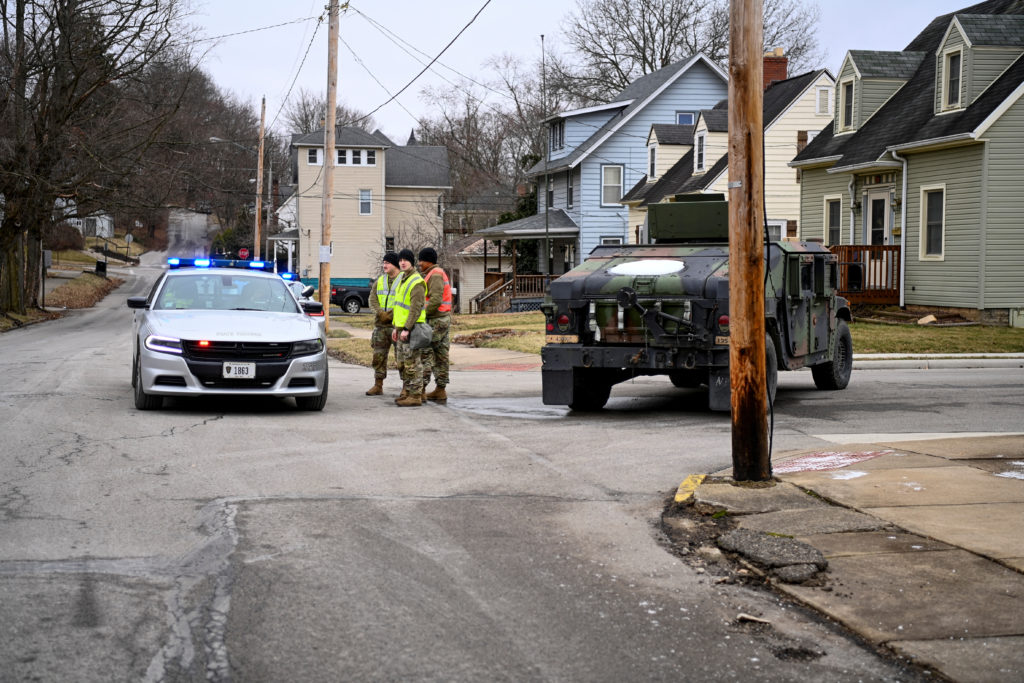Ohio Derailment: Prolonged Presence Of Toxic Chemicals In Buildings

Table of Contents
Types of Toxic Chemicals and Their Persistence
The derailment released a cocktail of hazardous chemicals, including vinyl chloride, butyl acrylate, and ethylhexyl acrylate. These substances are known for their toxicity and persistence in the environment. Understanding their properties is crucial to assessing the long-term risks associated with the Ohio derailment.
-
Vinyl Chloride: A known carcinogen, vinyl chloride is highly volatile and can readily penetrate building materials. Its presence in the air and its potential absorption into building materials like wood and drywall pose a serious long-term health risk.
-
Butyl Acrylate and Ethylhexyl Acrylate: These acrylates are also toxic and can cause respiratory irritation and other health problems. Their persistence in building materials, particularly porous ones like insulation and fabrics, is a major concern.
The persistence of these chemicals is determined by their half-life – the time it takes for half of the substance to degrade. Many of the chemicals released have relatively short half-lives in the open air, but their persistence within enclosed spaces like buildings can be significantly longer, especially when absorbed into porous materials. Bioaccumulation, where chemicals concentrate within building materials over time, is another factor contributing to their prolonged presence. This means that even after the initial release has dissipated, the chemicals may still be leaching out of building materials for an extended period.
Health Risks Associated with Prolonged Exposure
Prolonged exposure to the toxic chemicals released in the Ohio derailment poses significant health risks to residents. The effects can range from acute, short-term problems to chronic, long-term illnesses.
-
Short-term effects: These may include respiratory problems (coughing, wheezing, shortness of breath), eye irritation, headaches, and nausea.
-
Long-term effects: The long-term health consequences are more concerning and can include an increased risk of cancer (particularly vinyl chloride-related cancers), neurological damage (affecting cognitive function and motor skills), reproductive health problems, and various other chronic illnesses.
Children and pregnant women are particularly vulnerable to the effects of chemical exposure, as their developing bodies are more susceptible to the toxic effects. The complexity of chemical interactions makes assessing the long-term health impacts incredibly challenging, demanding long-term health monitoring of affected populations.
Challenges in Cleaning and Remediation
Decontaminating buildings affected by the Ohio derailment is a complex and challenging undertaking. The process involves several key obstacles:
-
Extent of contamination: Determining the precise extent of contamination within each building is crucial but difficult, requiring thorough testing and analysis.
-
Remediation techniques: Several techniques are employed, including air scrubbing, surface cleaning, and potentially even demolition in severely affected cases. The effectiveness of each technique depends on the type of chemical, the building material, and the level of contamination.
-
Cost and responsibility: The financial burden of cleanup efforts is substantial and raises questions regarding responsibility and liability. Disputes over who bears the costs could significantly delay the remediation process.
Environmental regulations and regulatory agencies play a vital role in overseeing the cleanup process. However, ensuring compliance and efficient remediation across all affected buildings presents significant regulatory challenges.
Lack of Transparency and Public Concerns
Public concerns regarding the transparency of the cleanup process and the information disseminated to residents are significant.
-
Information gaps: Communication gaps between authorities and the affected community have fueled distrust and anxiety. Clear, consistent, and readily accessible information is crucial to address public concerns.
-
Ongoing monitoring: Comprehensive and ongoing monitoring of air and water quality, as well as long-term health surveillance of affected residents, is essential. This will provide valuable data to assess the effectiveness of remediation efforts and track the long-term health effects of the Ohio derailment.
The need for improved public health information and increased transparency from government agencies cannot be overstated. Open communication and access to data will help alleviate concerns and build public trust.
Conclusion
The Ohio train derailment has left a lasting impact, with the prolonged presence of toxic chemicals in buildings posing significant health risks. The complexities of remediation, coupled with concerns about transparency, highlight the urgent need for comprehensive and sustained action. Understanding the lingering threat of toxic chemicals from the Ohio derailment is crucial. Stay informed about the ongoing cleanup efforts and advocate for comprehensive testing and remediation to ensure the safety and well-being of affected residents. Demand transparency from authorities and continue to raise awareness about the long-term consequences of this environmental disaster. Learn more about the effects of Ohio derailment toxic chemicals and how to protect yourself and your family.

Featured Posts
-
 Man Faces Felony Charges After Crashing Car Through Jennifer Anistons Gate
May 09, 2025
Man Faces Felony Charges After Crashing Car Through Jennifer Anistons Gate
May 09, 2025 -
 Reform Party Can Farage Deliver Real Change
May 09, 2025
Reform Party Can Farage Deliver Real Change
May 09, 2025 -
 9 Nhl Players Poised To Break Alex Ovechkins Goal Record
May 09, 2025
9 Nhl Players Poised To Break Alex Ovechkins Goal Record
May 09, 2025 -
 Uk To Tighten Visa Rules For Nigerian And Pakistani Applicants
May 09, 2025
Uk To Tighten Visa Rules For Nigerian And Pakistani Applicants
May 09, 2025 -
 Tien Giang Loi Khai Cua Bao Mau Ve Hanh Vi Bao Hanh Tre
May 09, 2025
Tien Giang Loi Khai Cua Bao Mau Ve Hanh Vi Bao Hanh Tre
May 09, 2025
